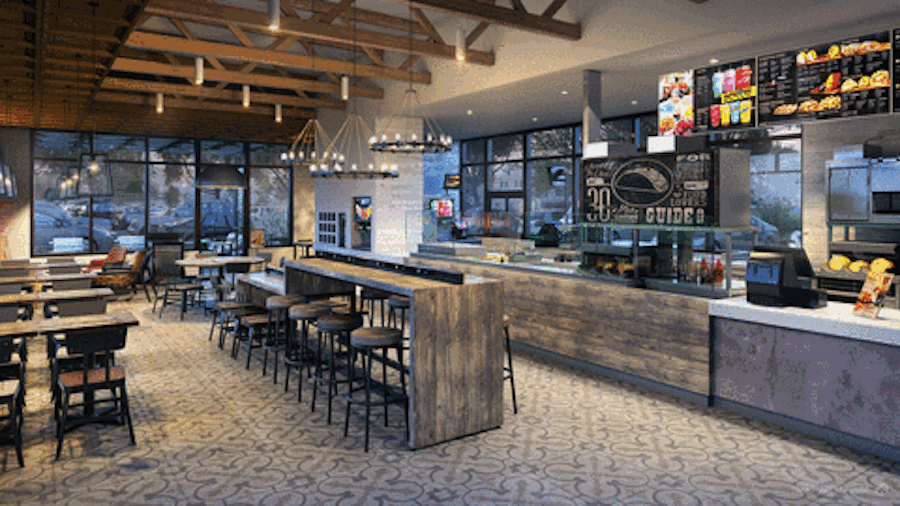Can four new restaurant designs revive Taco Bell sales?
Loading...
Taco Bell is set to get a makeover.
The Irvine, Calif., franchise has laid out plans to test four new restaurant styles in Orange Country this summer. Aimed at embracing the future with hints of the past, when Taco Bell locations opened with a bell, outdoor patio, and fire-pit, the company is hopeful the new designs can revitalize dwindling American interest in fast food and capture ground lost in the rise of "fast casual" food places.
“It’s no longer one size fits all,” stated Deborah Brand, vice president of development and design at Taco Bell Corp., in a company press release. “Consumers are looking for a localized, customized and personalized experiences that reflect the diversity of their communities – the flexibility in bringing these four designs to life gives us just that.”
But can a new look really revive sales?
Taco Bell dominated the Mexican-food-inspired fast-food market in the United States for decades, but the 2010s brought several blows to Taco Bell and the entrenched fast-food giants.
A September 2014 Brand Keys survey showed fast-food chains were losing ground in nearly all age demographics. Baby boomer visits dropped 18 percent in the US as they searched for more nutritious options, Generation Xer's interest declined 11 percent as fast-casual restaurants offered better food for the price, and 89 percent of Millennials sought out fast-casual restaurants that offered more customization.
Later the same year, a 2014 Consumer Reports survey seemed to show a different side of the same trends. While McDonald’s, Taco Bell, and KFC were continuing to dominate and expand abroad, they were losing ground at home. Regional chain In-n-Out won best hamburger, Chick-Fil-A best chicken chain, and Rubio’s Fresh Mexican Grill was at the top of the Mexican food charts.
Taco Bell placed 8th for Mexican food chains, below Qdoba, Chipotle, and Rubio’s.
“Our survey clearly shows the big guys need to respond,” Tod Marks, senior projects editor for Consumer Reports, told Reuters.
Taco Bell responded, in part, with new locations and new aesthetics.
In September 2015, Taco Bell began testing new facilities in urban markets. “Cantina” locations opened up in Chicago and San Francisco and traded in large seating areas for modern floor plans, more open kitchens, and more customizable menus. The location in San Francisco features a pick-up window and a patio for on foot consumers.
Taco Bell appears to be following the same approach of designing the restaurant to fit with its location in its four new designs:
Heritage: The new Heritage design is intended to be a more modern take on the original Taco Bell layout. Warm white walls meet tile, timber, and classic materials for the “Mission Revival” style, according to Taco Bell.
Modern Explorer: The rustic new Modern Explorer is designed for suburban and rural locations. Inspired by farms, the look is more rustic, natural, but still open.
California Sol: The California Sol design “blurs the lines between indoor and outdoor,” Taco Bell writes. It’s aimed at celebrating the California roots of the franchise with a beach feel.
Urban Edge: The most modern of designs combines street art and modern materials to fit newer urban locations.
Whether the new looks can make consumers hungrier for super burritos, Mexican pizzas, and Crunchwrap Supremes remains to be seen. The newly designed restaurants debut this summer in Orange County and if customers respond favorably, there are plans to roll out the new look to other regions throughout 2016. Longer term, Taco Bell’s expansion plans include opening 2,000 additional restaurants in the US by 2022, with hundreds of “Cantinas” planned and will likely feature many of the new designs.
“Building new restaurants is a key component to the overall growth and evolution of Taco Bell,” said Brian Niccol, chief executive officer at Taco Bell Corp. said in the press release. “Great design, Great Food and Great Economics is at the heart of our growth.”






